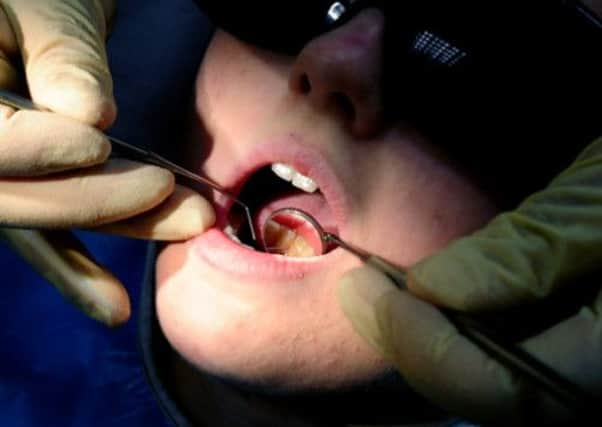North-South gap widens on tooth decay in children


Experts have warned of a “chasm of inequality” between youngsters from the poorer North and the richer South, where just over a fifth of children of that age suffer the dental problem.
The 33.6 per cent of five-year-olds with tooth decay in Yorkshire is second only to the proportion in the North West, where 34.8 per cent are affected.
Advertisement
Hide AdAdvertisement
Hide AdThe study, published by Public Health England (PHE), showed levels elsewhere range from 21.2 per cent in the South East and 23 per cent in the East to 29.7 per cent in the North East.
Health Minister Lord Howe said: “We know more work is needed to make sure good oral health is more consistent right across the country.
“Every child should have the opportunity to grow up with a healthy smile.”
However, he welcomed news that England’s overall levels of decay are among the lowest in the world, with more than 70 per cent of children now completely free of the problem.
Advertisement
Hide AdAdvertisement
Hide AdThe survey, compiled in 2012, is the second of its kind undertaken since its launch in 2008.
Four-year trends show overall improvements in decay and its severity in young children, PHE said.
Nationally, the study showed 27.9 per cent of children aged five have tooth decay, with between three and four teeth affected by decay, treated or untreated, on average.
Overall tooth decay in five-year-olds has fallen from 30.9 per cent in 2008 and the proportion of children with untreated decay has declined from 27.5 per cent to 24.5 per cent.
Advertisement
Hide AdAdvertisement
Hide AdAnd 72.1 per cent of five-year-olds are free from tooth decay, up from 69.1 per cent in 2008.
Decay levels are higher in the more deprived local authority areas, the survey found.
Dr Christopher Allen, chair of the British Dental Association’s Dental Public Health Committee, said: “This report highlights a welcome improvement to the overall oral health of five-year-old children across England, but it also reminds us of the deep chasm that exists between those with the best and worst oral health. That divide is based not just on geography, but also on deprivation.
“The fight to close this divide must continue.
“Crucial to its success are ensuring that a full dental public health workforce is available to advise on initiatives and funding made available to implement preventive programmes that can make a difference, and that children have access to dental care in all parts of the country.”
Advertisement
Hide AdAdvertisement
Hide AdIn Yorkshire, 66.4 per cent of five-year-olds were free from tooth decay last year and the proportion of those with untreated decay has dropped from 34.3 per cent to 29.3 per cent.
The rate of the dental infection sepsis has also reduced slightly from 2.9 per cent to 2.4 per cent since 2008, the study found.
Dr Jenny Godson, PHE’s regional dental public health consultant for the North, said: “Across the North, there has been a reduction in the proportion of children affected by dental decay and the severity of the disease.
“This is very encouraging, but we need to continue to monitor trends and support this welcome progress.”
Advertisement
Hide AdAdvertisement
Hide AdProfessor Kevin Fenton, director of health and wellbeing at PHE, stressed that “dental decay is preventable” and said there was still much work to be done.
“Parents should brush their children’s teeth for at least two minutes twice a day – once just before bedtime and at least one other time during the day,” he added.
“Also supervise tooth brushing until your child is seven or eight years old, either by brushing their teeth yourself or, if they brush their own teeth, by watching how they do it.”